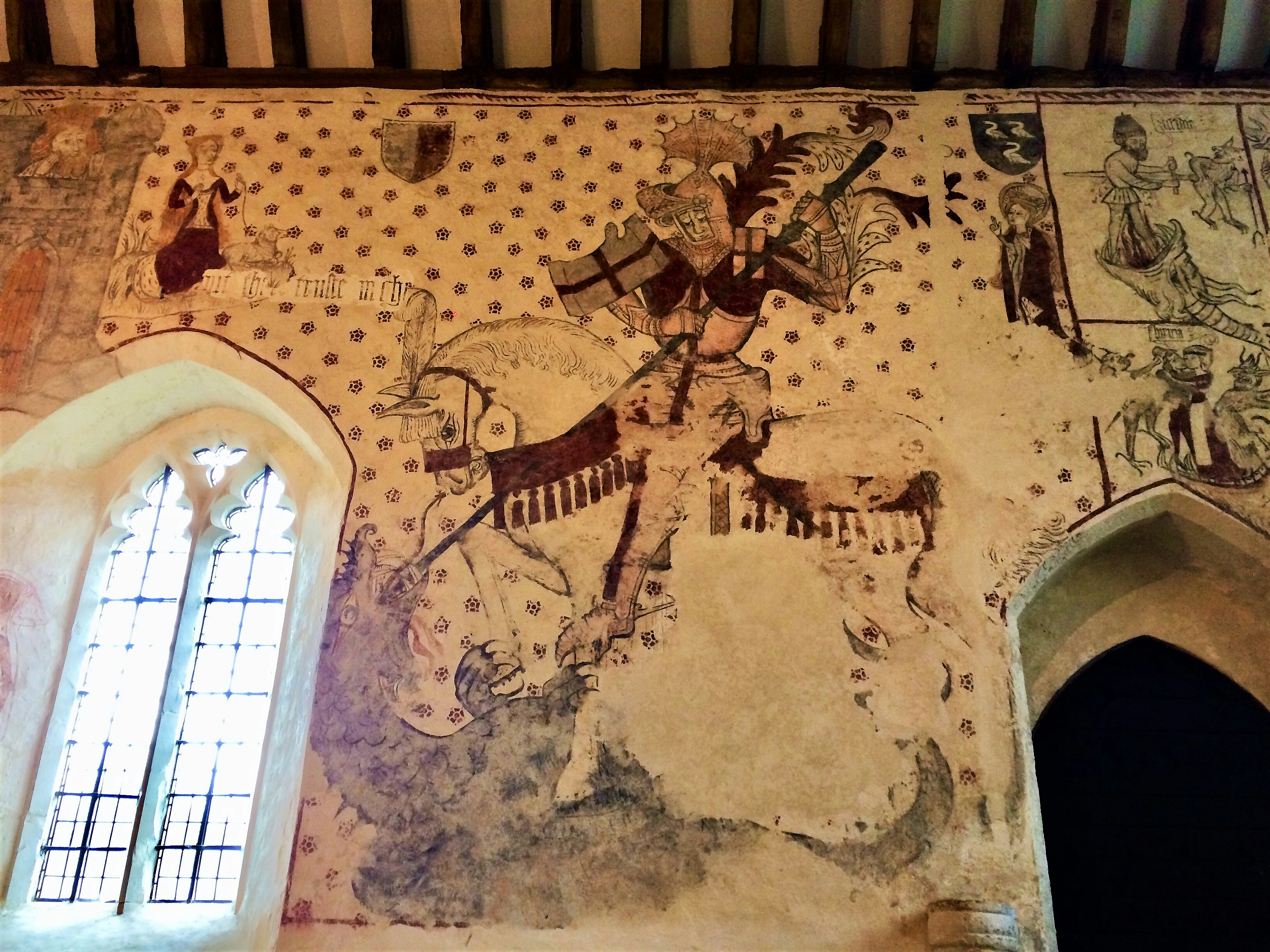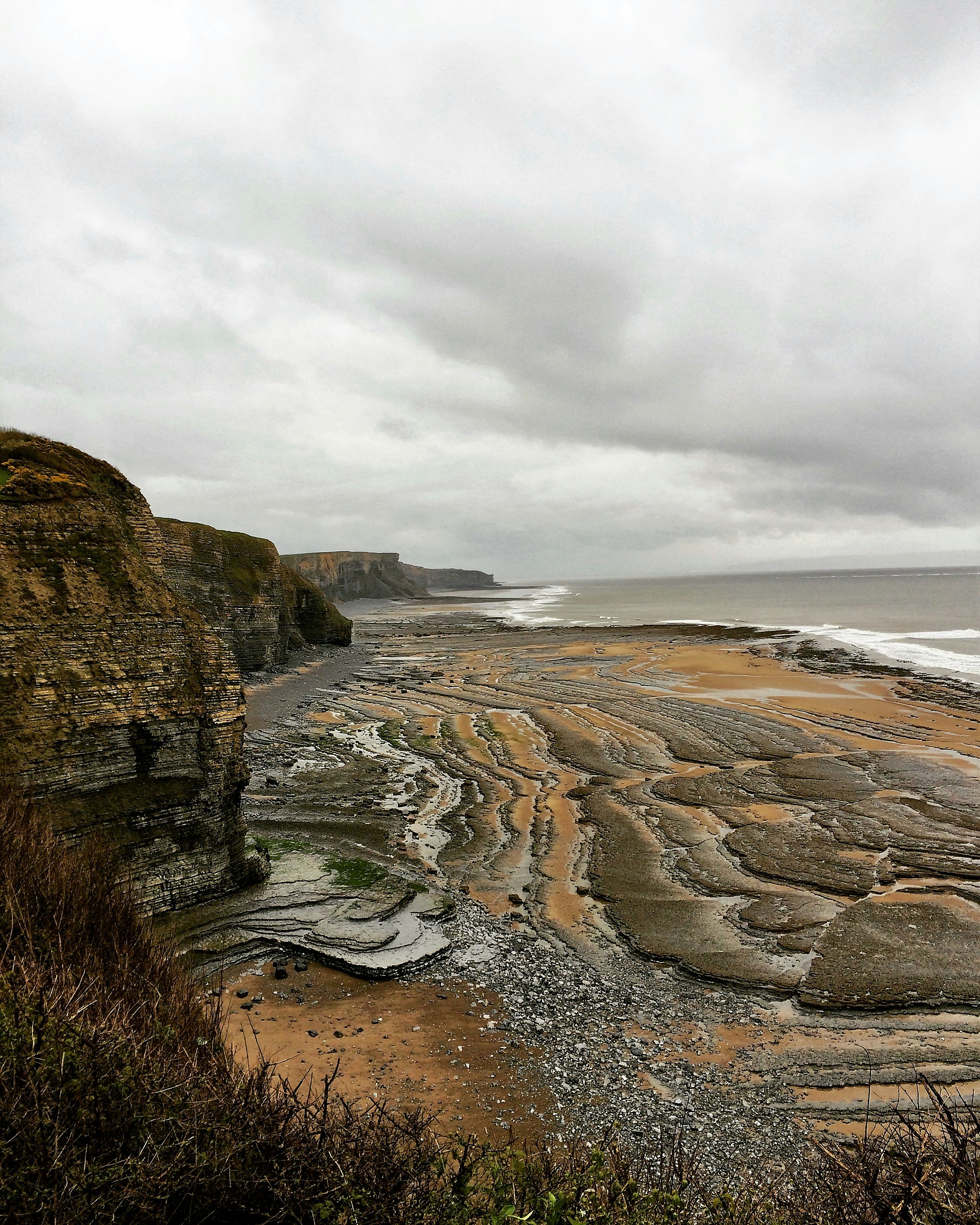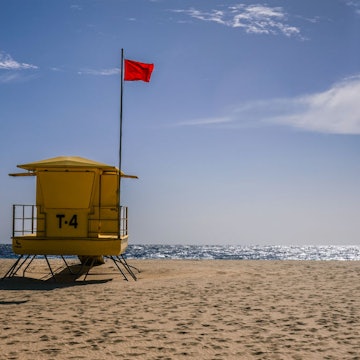

Head out on the Welsh Coastal Path through Glamorgan and Carmarthenshire for some wonderful walks with fewer other visitors © Bridgendboy / Getty Images
Heading out on the Wales Coast Path, the first trail following an entire nation's coastline in the world when it opened in 2012, is a glorious way to explore this glorious country.
Covering all 870 miles of the Welsh coast, it's a walker's delight and ticks all the boxes for stunning scenery, historic buildings, pretty towns and villages, and great food and drink.

Many visitors make a beeline for pretty Pembrokeshire or the castle-covered northwest, but two less explored but equally worthwhile regions in the south, Glamorgan and Carmarthenshire, offer the best of Wales without the crowds that those other areas see. Follow us on a seaside stroll from east to west, taking in some of the highlights of these two counties.

Glamorgan
In the footsteps of saints
Two tiny Glamorgan towns, barely dots on any map, reward exploration for anyone with an interest in Welsh history. Llantwit Major is a small village that has a big past dating back to the start of the 6th century when an early seat of Celtic learning was established here – the first in the whole of Britain. Many religious ruins dot the area, including a dovecote that's now isolated in a field but was once part of a large monastic complex, but the main claim to fame here is St Illtud’s Church. Heavily involved with the local community (there's always some event taking place), it's also a fascinating building where you can see thousand-year-old Celtic crosses and medieval wall paintings.
Even more impressive examples of the latter can be found nearby in the equally tiny town of Llancarfan and its church, St Cadoc’s. The extraordinary wall paintings, hidden for centuries until repairs accidentally uncovered them in 2008, depict in strikingly vibrant colours a damsel in dragon distress, the seven deadly sins and the seven virtues, all created in the 1480s. Continuing conservation is revealing them as some of the best preserved and most detailed medieval paintings in the country.

Castles, coastlines and starring roles
Monknash Beach is a dramatic, windswept Jurassic stretch of coast where you’re likely to find fossils if you take a stroll at low tide. Sitting above it are the ruins of Dunraven Castle, a grand house that was left to ruin from the 1960s when maintenance became too expensive. A stroll through the still-maintained walled garden brings you to Dunraven Bay and a beach that Dr Who fans will recognise from a pivotal scene in the David Tennant era (when he says a final goodbye to Rose).
A few miles further west is a big screen location, Ogmore Beach, whose sand dunes, the second biggest in Europe, doubled for Turkey in the film Lawrence of Arabia. Close by, the 12th-century ruins of Ogmore Castle can be explored, one of the many built by the invading Normans. You can go horse riding on the beach imagining you’re a conquering knight or Peter O’Toole. Horses are available at Ogmore Farm. Look out for the Two Anchors pop-up in the car park by the beach, serving fresh local sea food dishes and veggie options to eager locals and in-the-know visitors.

Carmarthenshire
Reclaiming landscapes
Carmarthenshire's largest town, Llanelli, is known for two things: rugby and tin (the town was known as Tinopolis at one point). While the former is still a source of passionate pride for locals, the latter has died out and taken many jobs with it. What was once the site of heavy industry has been turned into a waterfront park, which now as part of the Wales Coast Path offers wonderful walks complete with ponds, flower meadows, views out across the water to the Gower Peninsula and even a plaque to aviator Amelia Earhart who, with two co-pilots, landed here in 1928 becoming the first woman to cross the Atlantic by plane.
Following the coast west brings you to Pembrey Country Park, a vast playground for children and adults these days but with a largely hidden military past. Now the preserve of cyclists, hikers and dog walkers, with a dry ski slope, toboggan and glorious 8-mile beach to stretch out or stroll on, during World Wars I and II this whole area was a massive munitions factory, providing shells for the front and work for local women. Brick tunnels from the factories, built in curves to contain blasts in the event of an accident, are hidden among the trees and are all that’s left to show a very different past to what visitors come for in the present.

Dylan Thomas trails and sands made for speeding
Further west still, sitting prettily on the River Taf, is Laugharne (pronounced Larn). An impressive castle and lively high street would be reasons enough to stop here, but the town's main claim to fame is as the home of Wales' great 20th-century poet, Dylan Thomas. Although not born here, Thomas had a strong affection for Laugharne and spent many years living here after 1938. Along with exploring his home and writing shed, where he composed some of his most famous works including Under Milk Wood, you can follow the Dylan Thomas Birthday Walk. Developed by local farmer Bob Stevens on his own land, the trail commemorates Thomas' 30th birthday, a walk he did that day and a poem he wrote afterwards. Bob's path follows Thomas' route, starting at his home, passing the castle in Laugharne and following the shore before climbing through woods. It's dotted with information panels covering the poet's life, the town's history and quotes from the birthday poem – plus it offers wonderful views across Laugharne and the Taf estuary.
Close to the town are the famous Pendine Sands, a 7-mile stretch of beach that has seen many land speed record attempts, including by the famous Malcolm Campbell in 1924 and by actor Idris Elba, who in 2015 broke Campbell's 'Flying Mile' record here. In 1933 British pilot Amy Johnson and her husband took off from the sands en route to New York. Running out of fuel they crash landed in Connecticut but survived.
Poetic walk complete and world-record-breaking beaches inspected, you can raise a glass to Thomas back in Laugharne at Brown’s, the pub he drank in so frequently that he gave out its phone number as his own. The restaurant here, Penderyn, serves the best food in town, perfect fuel for the next stage of your Wales Coast Path adventure.
Clifton travelled to South Wales with support from the Wales Coast Path, which is organising a free walking festival this spring. Lonely Planet contributors do not accept freebies in exchange for positive coverage.
https://shop.lonelyplanet.com/products/wales-travel-guide-6
















